We talked in class about the death of a leader or powerful figure. I though immediately about the death of Vaclav Havel last December when I was in Prague. The Czech Republic was very affected by the death of its former leader and the world mourned him.
Havel was really important to the Czech people but I want to give you a little background on who he is and why he is important.
Vaclav Havel was born into a privileged family that lost its wealth when the communists where installed in Czechoslovakia in 1948. Communist rule limited his education and he bounced around in various jobs until he landed in the Writers Union in the mid 60s where he was first active in politics and humanism. Havel wrote throughout his educated life and was even invited to visit America to see a production of his second play. Travel was limited under the Soviet rule but he was allowed to go.
Among Havel’s first political acts was his opposition to the Soviet tanks in Prague during August of 1968 suppressing reforms, and his organization of a petition repudiating the politics of normalization in the Soviet Union. Multiple actions caused him to be in and our of prison for about five years.
A politically sanctioned student demonstration on November 17th, 1989 was broken up by the police where they brutally beat and arrested most of the demonstrators. The significance of November 17th for the Czechs is related to student martyrs and abuse over time, if you want to know more about the role of eth Czech students you acn read more at this website…
http://www.prague.net/blog/article/35/november-17-is-twice-as-important-for-czechs.
Vaclav Havel organized a meeting two days after the student beatings where he and other dissidents established the Civivc Forum. The Civic Forum requested the communist leaders to resign, an investigation of police action, and release of political prisoners. The day after Havels’ meeting 200,000 people, mostly students again, participated in a demonstration that was the first of the series that ended the Communist rule, the Velvet Revolution. Vaclav Havel was installed as the president of Czechoslovakia and remained the President during the Velvet Divorce, the split of the Czech Republic and Slovakia.
During his presidency he was constantly addressing human rights and providing “moral leadership.” He constantly fought for equality and rights of the Roma and gypsy peoples as well as other minorities in the country. Havel was incredibly instrumental in the formation of the Czech Republic as the country that we see today. He was a major player in the inclusion of the Czech Republic in the European Union, which happened the year after his resignation.
Havel “stepped down” in 2003 but he was still instrumental in the future of the country. Many present leaders would seek his advice well after 2003.
The reaction of the Czech people after the death of Havel was very interesting to watch.
During Havel’s death I was able to witness first hand the reaction of the people. I was on the Charles Bridge during the procession of the body to the Prague Castle for the public viewing. The Bridge filled up with people and then a procession of police, citizens with flags of support for Havel as well as Czech flags. At the end of this procession was a car with the coffin inside.
There was a writhe of red roses on the side of the car. All of the people on the bridge, civilians, photographers, and news reporters fallowed the car in silence all the way to the Prague Castle. It was a very curious procession. The people fallowed the coffin about two and a half miles to the Cathedral of St. Vitus in the Castle complex. Many of the followers held Czech Flags and banners with praise for the former leader.
The streets where lined with votive candles and flowers and national and solid black flags hung from buildings.
The week after his death all advertisement stands replaced ads with memorial posters of Havel.
The Prague Castle is still the seat of government in the Czech Republic and business went on as usual as it did during Havel’s reign.
For more information on Havel’s life you can read an article on him in the NY Times…
or from The Guardian …
http://www.guardian.co.uk/world/2011/dec/18/vaclav-havel.
If you want to know specifics about his funeral there are articles here…
http://www.bbc.co.uk/news/world-europe-16304858.
-Andrea

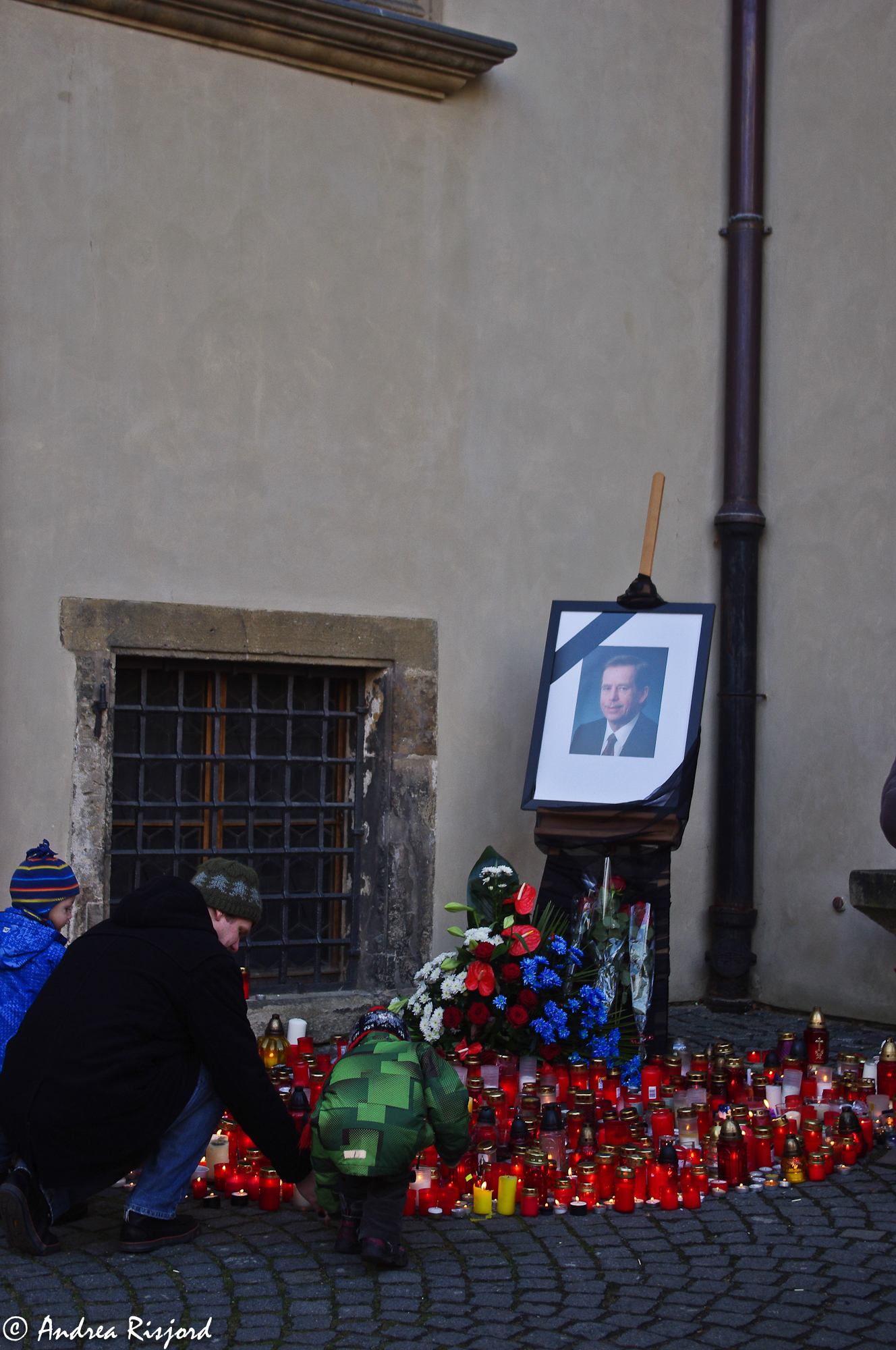
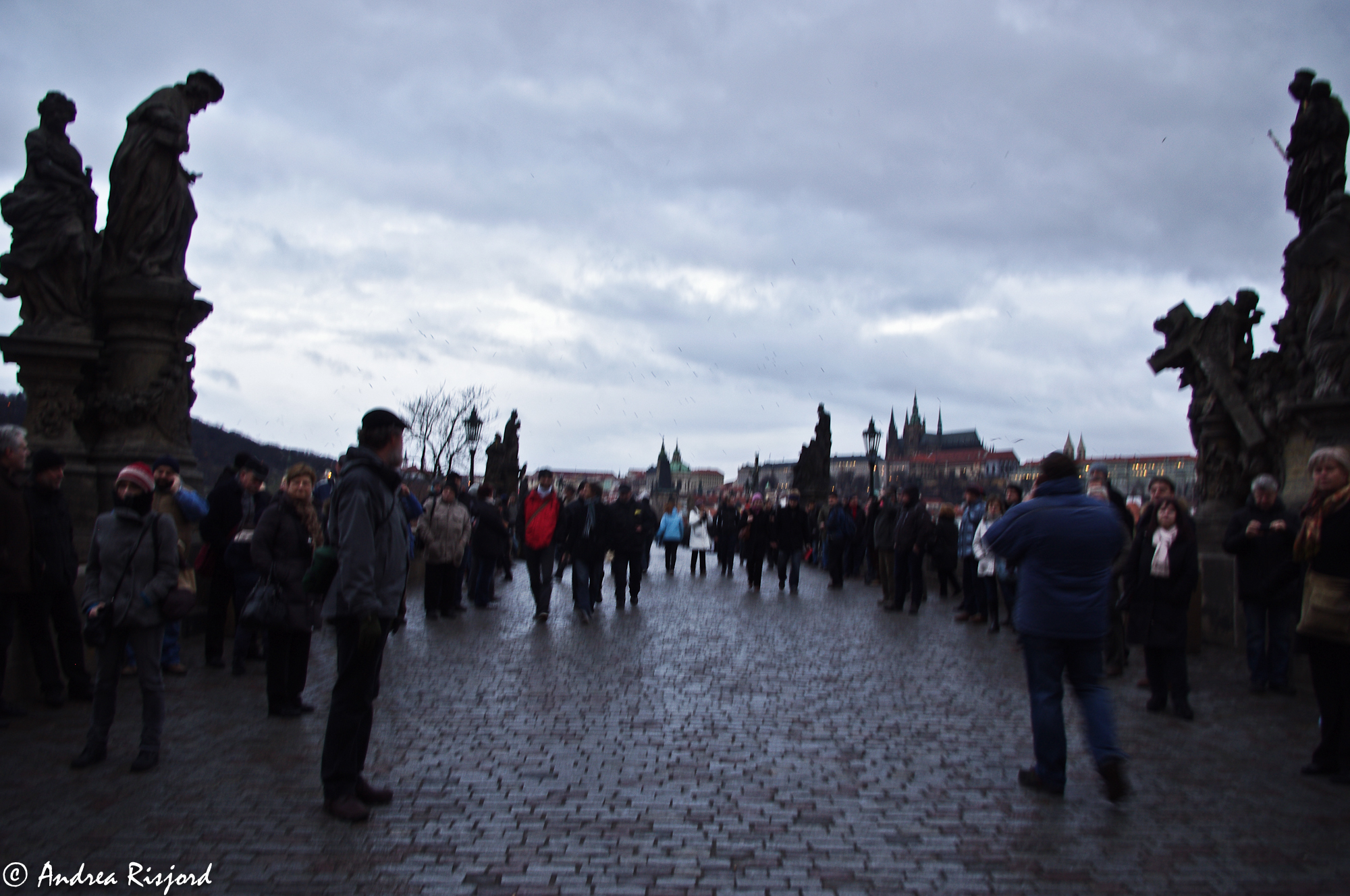
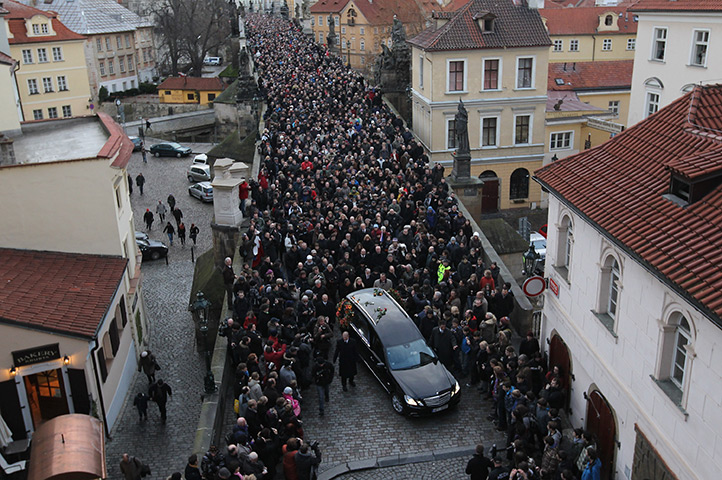
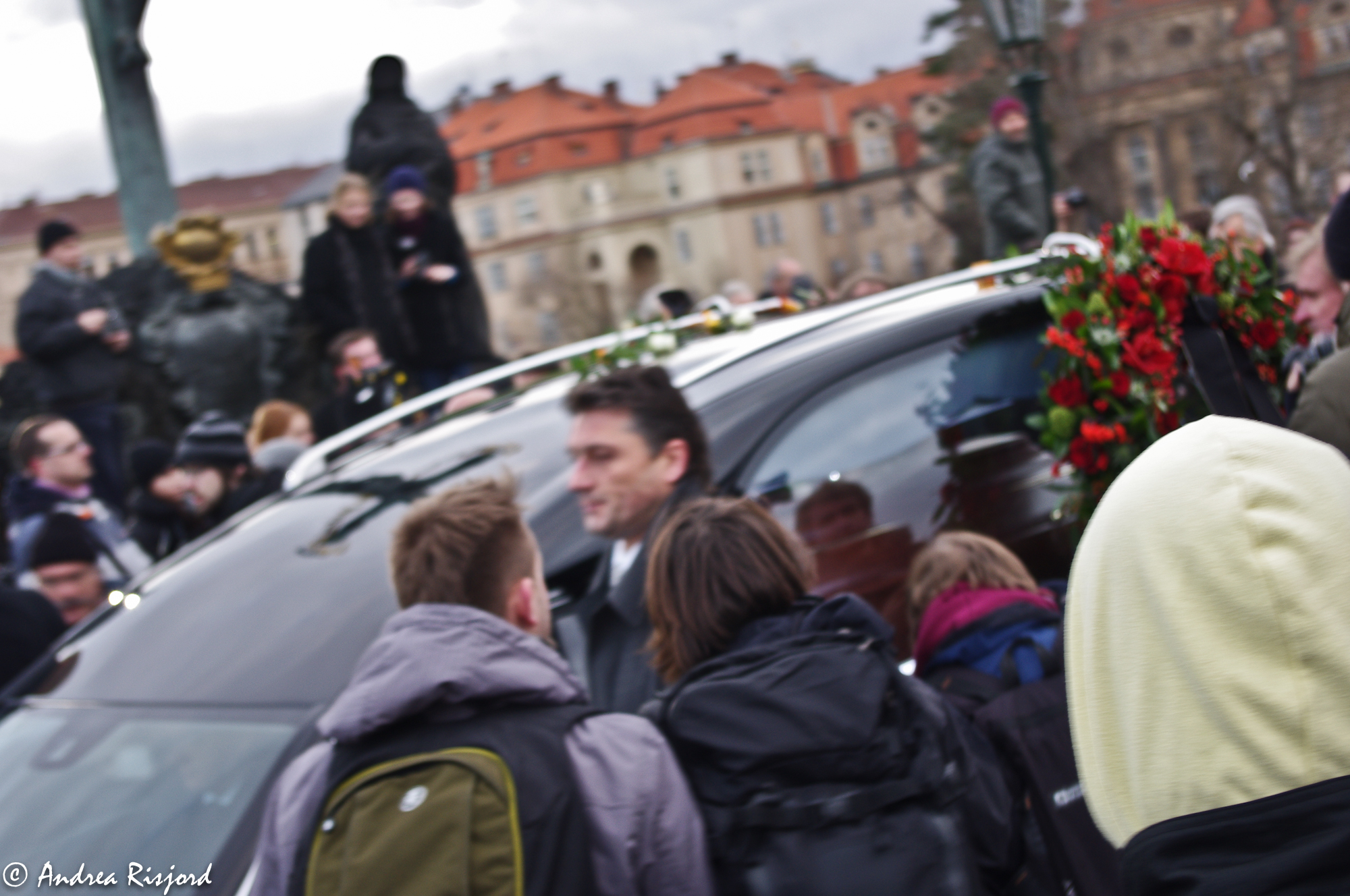
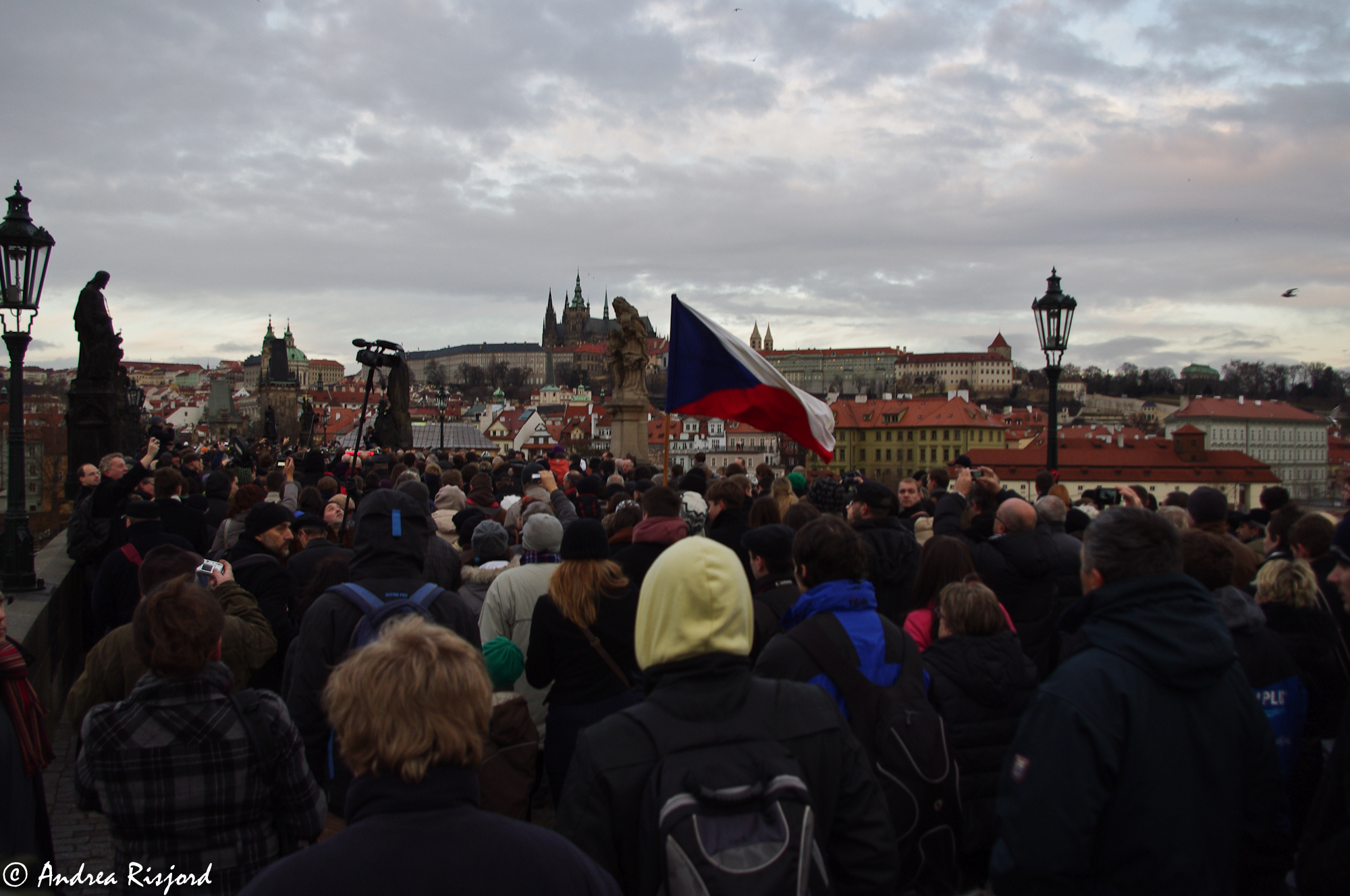
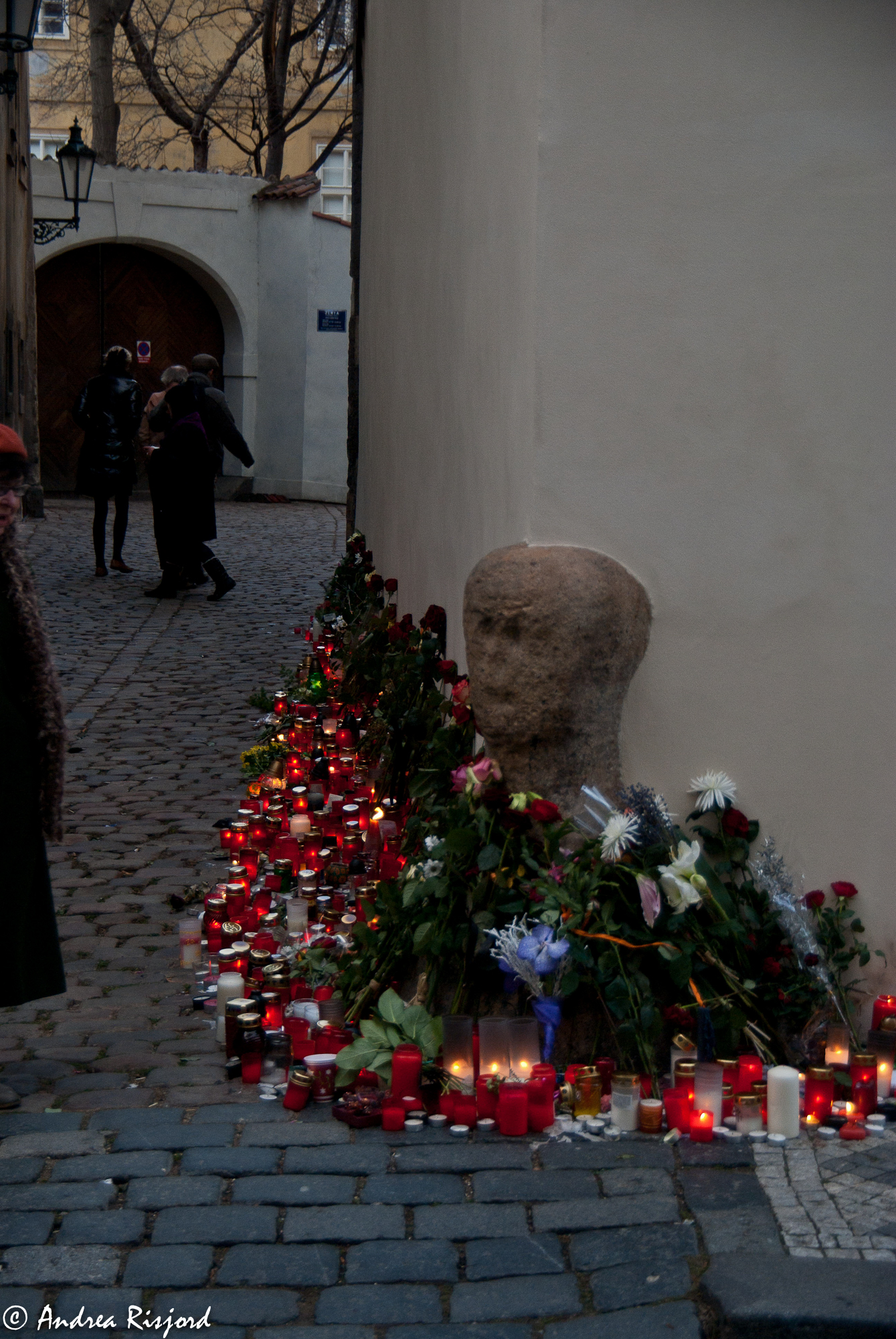
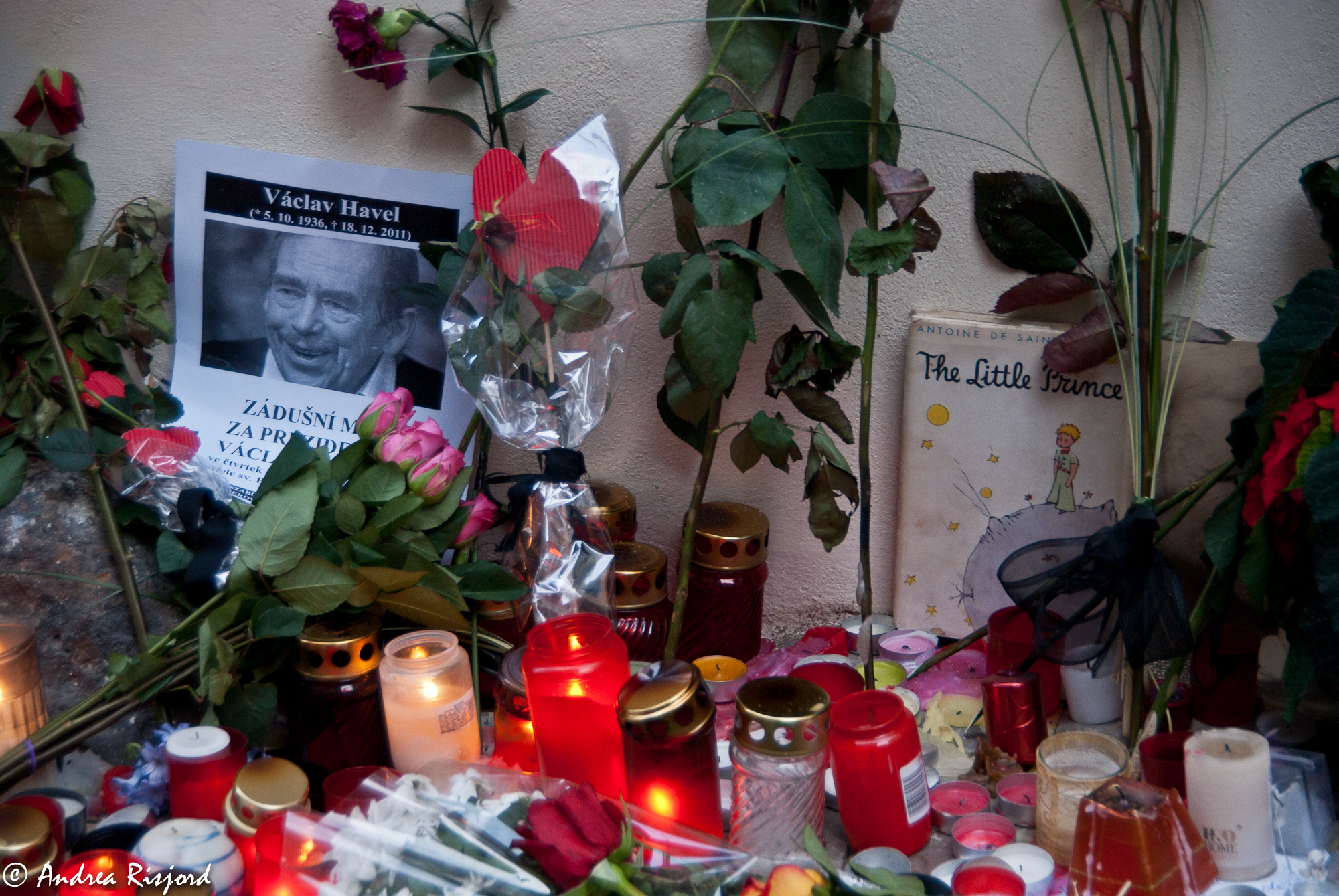

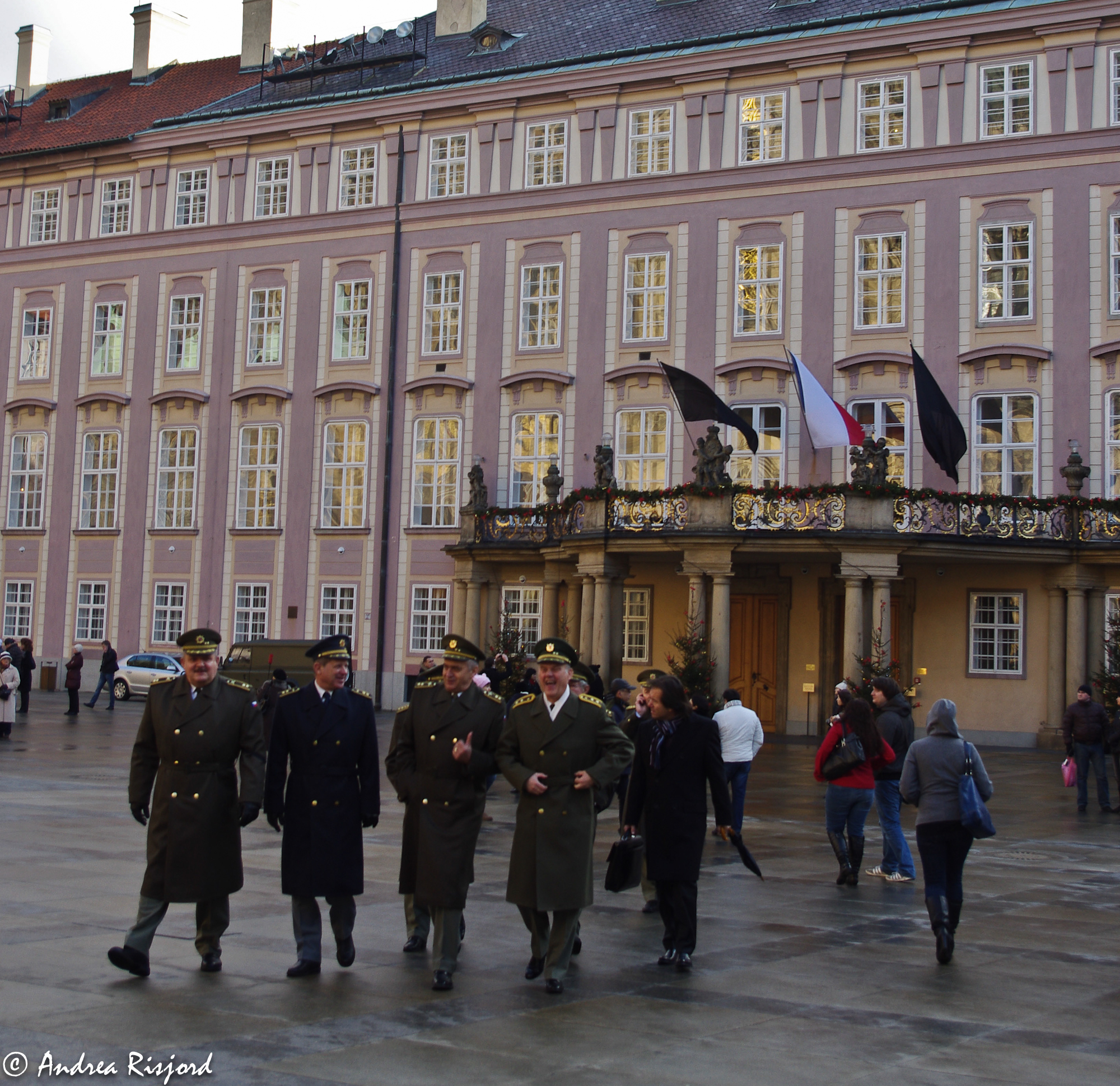
One response to “Death of a Leader; Public Mourning”